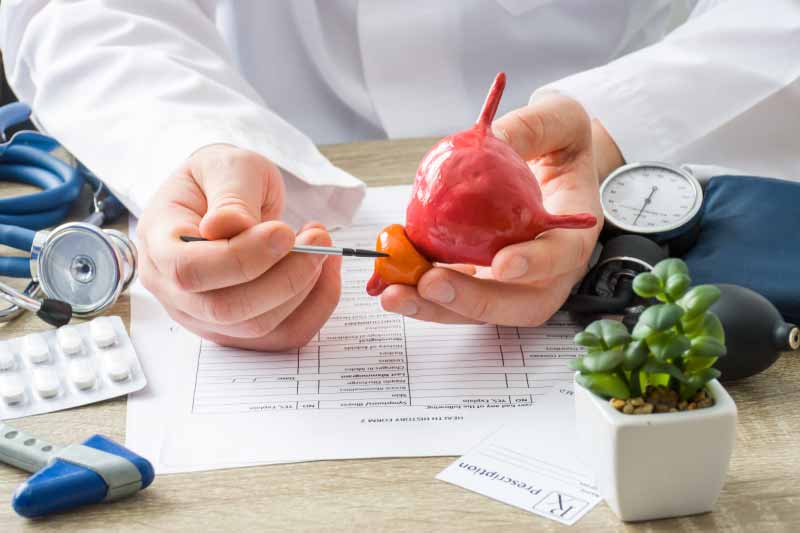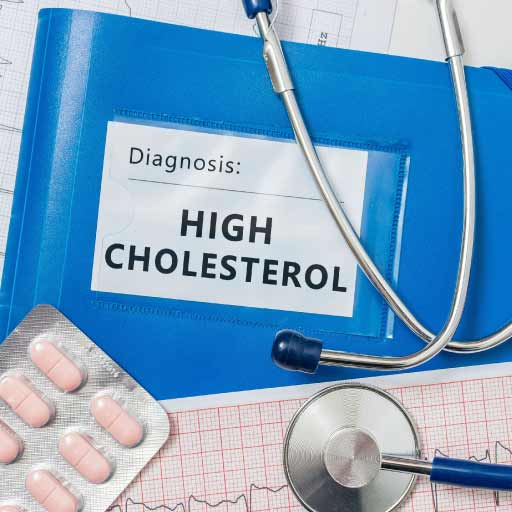
Prostate cancer is one of the most common types of cancer in males. The prostate is a small walnut-shaped gland that produces the seminal fluid that nourishes and transports the sperm.
While this form of cancer grows slowly, it primarily remains confined to the prostate gland only.
इनके बारे में जानें:
- Symptoms of prostate cancer
- Causes of prostate cancer
- Treatment of prostate cancer
- Ways to reduce the risk of prostate cancer
Symptoms of prostate cancer
Prostate cancers may not show any early signs or symptoms in the early stages. However, in its advanced stages, one should make a note of the following symptoms:
- Trouble urinating
- वजन कम होना
- हड्डी में दर्द
- Blood in the urine
- Decreased force in the stream of urine
- Erectile dysfunction
- Pain in the back, hips, or pelvis
Prostate cancer begins when the cells in the prostate develop changes in their DNA. If this DNA instructs the cells to grow and divide more rapidly than the normal cells, then the abnormal cells would keep living while the other cells die. When these abnormal cells accumulate, they form a tumor. This tumor can invade and infect a nearby tissue or spread to other body parts.
Causes of prostate cancer
Some factors that can increase the risk of prostate cancer include old age and is most common in people over the age of 50 In addition, depending on the family history, if any blood relative is or has been diagnosed with prostate cancer or breast cancer, this increases your risk of being diagnosed. Obesity is a lifestyle condition that can increase the risk of prostate cancer and is even more likely to return after initial treatment. Therefore, maintaining a healthy weight is imperative. You can get the readings on the online BMI Calculator to check your body mass index. Other factors that may influence prostate cancer risk include smoking, alcohol consumption, exposure to chemicals, vasectomy surgery, sexually transmitted infections, and inflammation of the prostate.
Treatment of prostate cancer
The treatment of prostate cancer depends on the stage a person is at. A person may carry out a radical prostatectomy to remove the tumor. The procedure may also involve removing surrounding tissue, seminal vesicles, and nearby lymph nodes. Radiation therapy is also used to kill cancer cells. When cancer spreads to distant parts of the body, or if it comes back after remission, treatment options such as chemotherapy, hormonal therapy, and immunotherapy are used.
Ways to reduce the risk of prostate cancer

Take a look at some ways to reduce the risk of prostate cancer.
- Eat right and eat healthily. This starts with consuming a balanced diet. Include fruits and green vegetables, which contain all vital nutrients and vitamins.
- Exercise daily to stay fit and improve your overall health. This way, you can keep control of your desired weight.
- Talk to your doctor about the increased risk of prostate cancer.
Stay active in the Activ Living Community to find more details on mindfulness and nutrition.





 1800-270-7000
1800-270-7000












I appreciate you letting us know that prostate cancer starts when the cells in the prostate develop changes in their DNA until the abnormal cells accumulate and become a tumor.